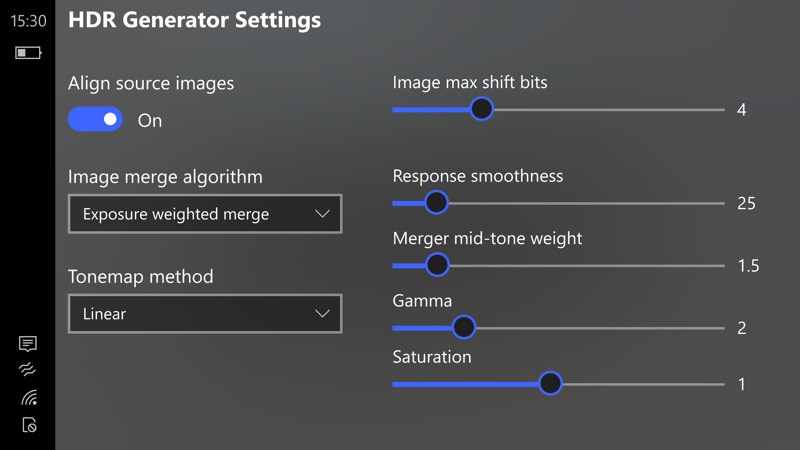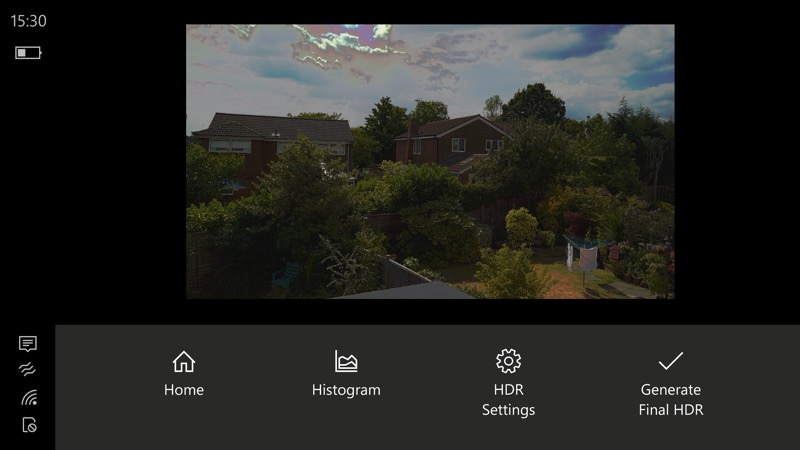From the Store description:
Create stunning high dynamic range (HDR) photo with this simple app. HDR maker lets you stack a series of photos with different exposure settings to create a true HDR image. The app also comes with several tone mapping algorithms that converts HDR image back to SDR image.
If you are wondering how the magic happens behind the screen, here is a good explanation:
You can use this app to develop raw files. The app's HDR processing pipeline can automatic recover significant details in the image's highlight and shadow area. The app also allows you to acquire images directly from the Windows device's back facing camera (limited HW compatibility).
Supported image merge methods:
- Exposure fusion (generates SDR image directly without tonemapping)
- Exposure weighted merge (genearte true HDR image, require tonemapping to compress the dynamic range for viewing and printing)
Input format supported: JPG (8bpc), TIF (8bpc), TIF (16bpc)
Input raw file format supported: 3FR, ARW, CR2, CRW, DNG, NEF, ORF, RAF, RW2.
Output format: JPG (8bpc), TIF (8bpc), TIFF(16bpc), Radiance HDR(32bpc)
Now, having said that this is mainly aimed at larger Windows 10 devices, this is AAWP and we deal in Mobile - so I've done some demo screenshots on a Lumia 950 (hey, it's UWP and works on all form factors):

Grabbing images within HDR Maker Pro itself - good to see, it's not just reliant on importing previously captured shots. And most Windows 10 tablets have rear cameras, so grabbing images on the go isn't a total no-no....

Back to the main UI. Note the import from 'raw' images, if you want to invest lots of time and really go to town with this app (albeit probably on the desktop)...

Here are the HDR processing defaults - you'll gather from their names that you shouldn't really fiddle too much until you've learned what each one does!

You get a preview (looks a bit dark in this case), along with an optional histogram...

Which also confirms that the test HDR has turned out too dark - but hey, I'm just screenshotting the app here - you'll have to grab it yourself and spend a few hours playing if you want to go further!

There's a final chance to adjust hue and saturation before the final JPG is rendered...

And then we have this test 2MP HDR image. It's not brilliant. HDR Maker Pro has been through several updates over the last month and the developer's clearly tweaking everything, but there's work to do. Maybe it works better with better exposed and captured source images from a 'pro' camera?

Just for immediate comparison, this is the HDR-ed-to-the-max version from Windows 10 Camera. Night and day, etc.
You can grab this in the Store here. HDR Maker Pro makes no real sense under Windows 10 Mobile, but you might like to grab it for another, larger Windows 10 computer?
